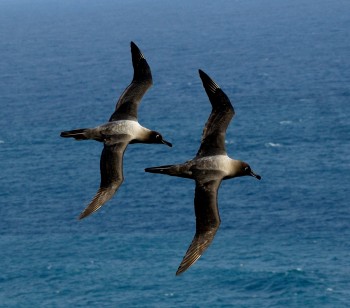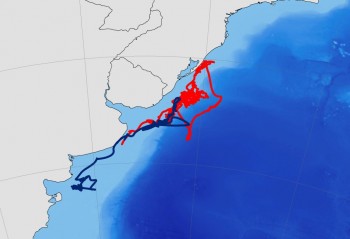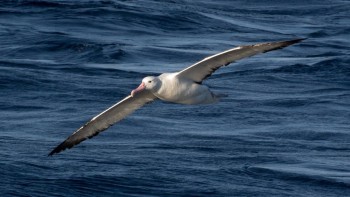Ben Lascelles (BirdLife International, Pembroke Street, Cambridge, UK) and colleagues have published in the journal Diversity and Distributions utilizing at-sea tracking data, including of ACAP-listed Wandering Albatrosses Diomedea exulans, to identify marine sites of conservation importance.
The paper’s abstract follows:
Aim. Enhanced management of areas important for marine biodiversity are now obligations under a range of international treaties. Tracking data provide unparalleled information on the distribution of marine taxa, but there are no agreed guidelines that ensure these data are used consistently to identify biodiversity hotspots and inform marine management decisions. Here, we develop methods to standardize the analysis of tracking data to identify sites of conservation importance at global and regional scales.
Location. We applied these methods to the largest available compilation of seabird tracking data, covering 60 species, collected from 55 deployment locations ranging from the poles to the tropics.
Methods. Key developments include a test for pseudo-replication to assess the independence of two groups of tracking data, an objective approach to define species-specific smoothing parameters (h values) for kernel density estimation based on area-restricted search behaviour, and an analysis to determine whether sites identified from tracked individuals are also representative for the wider population.
Results. This analysis delineated priority sites for marine conservation for 52 of the 60 species assessed. We compiled 252 data groupings and defined 1052 polygons, between them meeting Important Bird and Biodiversity Area criteria over 1500 times. Other results showed 13% of data groups were inadequate for site definition and 10% showed some level of pseudo-replication. Between 25 and 50 trips were needed within a data group for data to be considered at least partially representative of the respective population.
Main conclusions. Our approach provides a consistent framework for using animal tracking data to delineate areas of global conservation importance, allowing greater integration into marine spatial planning and policy. The approaches we describe are exemplified for pelagic seabirds, but are applicable to a range of taxonomic groups. Covering 4.3% of the oceans, the sites identified would benefit from enhanced protection to better safeguard the threatened species populations they contain.”

Wandering Albatross display, photograph by Rowan Treblico
Reference:
B. G. Lascelles, B.G., Taylor, P.R., Miller, M.G.R., Dias, M.P., Oppel, S., Torres, L., Hedd, A., Le Corre, M., Phillips, R.A., Shaffer, S.A., Weimerskirch, H. & Small, C. 2016. Applying global criteria to tracking data to define important areas for marine conservation. Diversity and Distributions 22: 422-431.
John Cooper, ACAP Information Officer, 13 September 2016


 English
English  Français
Français  Español
Español 




